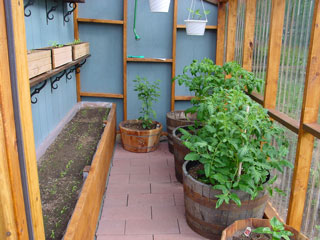
*How Much Garden is Enough?*

When I was a kid, our little family of four lived on a 10 acre "farm". About 8 acres were in irrigated pasture (more than we needed) where we had a cow roaming and we would raise a couple calves. We had a chicken pen with a bunch of chickens, about an acre in gardens and a couple of Strawberry hills. We also had a couple peach trees, an almond tree and both english and black walnut trees. My dad worked double shifts to keep us above water at a pulp mill. Between the gardens, butchering a steer yearly, putting some chickens in the freezer, supplemented by a little fishing and hunting we truly subsisted off of our little farm. I wish I could find something similar now I would do my best to get it (goal # 1). We were poor and worked hard on that place but we ate like kings, we canned and froze our excess and DID live through the winters on what we canned or put into the freezer. We didn't get much that was bought in stores other than clothes, soap stuff and those things we could not produce.
A lot of thought, planning and work goes into any garden that is large enough to provide a family with food for an extended period of time. The pioneers scraped a living out of the ground successfully but they had the land and were taught those survival skills as children and reinforced them daily. We need to become more self-reliant in our own food production when we have the luxury of stores. As long as TS don't HTF soon we have some time to prepare our land and learn the techniques to provide our own food. Don't wait until you need to put in a garden to do so, you might get a rude awakening. Your soil may be poor and require fertilization or imported dirt by the truck load or you may need to gain additional skills.
The first thing to do when we want to put in a garden is to identify what we are going to plant. Then with this information find out what the sun requirements are for your crops. Some crops need "full sun" while others can get by on morning to midday sun. This is important, especially the first thing in the morning sun through the midday sun. I have found that evening sun is not as critical for what I have been growing (but then again where I live the sun rises at about 4:30am and sets sometime around midnight during most of the growing season). Then find the optimal location for the garden. Does it have good sun exposure? Next make sure the ground has good drainage, you donít want water to puddle up a lot and stay. This could cause problems unless you want to grow rice. Think about how you are going to water your crops. Will you be using a diverted creek, pumped water or another source? Once you have found your location where you are going to put in your garden seedbeds you need to determine if you are going to go with in-ground, raised beds, pots on the ground or pots on shelves. Each has benefits depending on where you live and your circumstances. The raised beds are especially helpful in more northern climes where in-ground beds are very good in others. If your ground space is limited you may want to look into using pots and shelving. Most states have an agricultural assistance office that you can request information on local growing practices. Regardless of the type lets look at how the seedbeds are created, very few of us live where the ground is cleared and fertile to the point that you can just drop the seeds on the soil and come back later to harvest. A seed bed is created ahead of time. Till up the soil removing as many rocks as is practical. For some raised beds I have sifted soil to remove rocks and refuse that is larger than the 1/4 inch size of my home made sifter. Next mix in some compost and or manure then let it sit for a while if you can. Be careful it you are using chicken manure, because it is usually hotter (higher in nitrogen I think, IIRC) and will burn your plants.
Start a good compost pile if you havenít already, you will need it later (commercial fertilizer will only last so long, how many years of garden will you have to provide for your family?). If possible you might want to build a compost container that would allow you to drain and collect any water that filters through your compost pile, around here I think that some call it "compost tea" and it is really good to use on your crops too!! Building a compost is really not hard nor rocket science. You need a space for it out of the way and downwind ;-). Fall leaves, a load of cow or horse manure, grass cuttings and kitchen scraps go into the pile. You will need a pitch fork or a fork of some kind to turn it at least once a week to get some air into the pile. It should start to "warm up" some as the organic material deteriorates. After a year or so this is added to the soil in the fall for a spring planting, it really fortifies the soil naturally.
About irrigating systems for our gardens: Can you save enough water from your roof runoff to fill a couple drums or a cistern and then use it to water your plants or is there a stream or pond that could be used. Using an electric pump or a wind operated pump would work, but do you already have it installed and is it working for you. If not, finding parts or fabricating them yourself will take time and resources. If it ainít in and working you cannot count on it.
A supply of lime, both prilled and powdered, is handy to change the pH of the soil. Most plants like a soil that is 6-7 or mostly neutral. Get a small testing kit and check the pH of your soil and if necessary add some lime to "sweeten" your soil to get it into the 6-7 range. In prilled form it enters the soil more slowly where the powder is faster to change the soil pH.
Tools, you will want to get two or three of each at least: shovels, hoes, rakes, garden forks, pitch forks, wheelbarrows, a tiller (if you can afford it), are all necessary to getting a large garden into the ground. Hoses, sprinklers and other implements that would help in watering and trimming up your garden are also important.
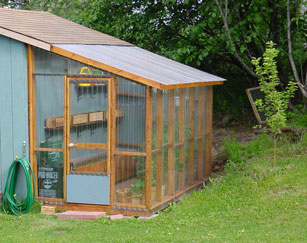
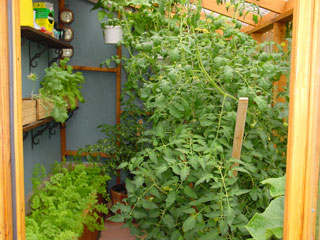
Green houses can help to extend your growing season. In the more northern latitudes they are more handy than in the south. I have built a small 6' by 12' addition to one of my sheds that has helped a lot. But it is too small to do more than grow a couple things that require a hotter growing season to help supplement my garden. For example I can grow tomatoes in it along with green beans, cucumbers and hot peppers. My climate is just too cold here for the hot weather crops to do well. Be sure to vent your green house, in direct sunlight the temperature inside mine gets to over 120F by 11am easily, even here in Alaska.
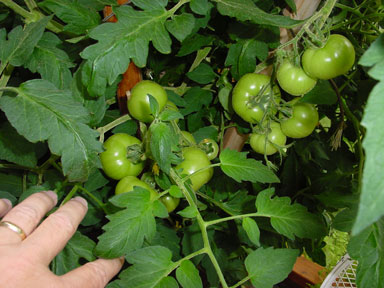
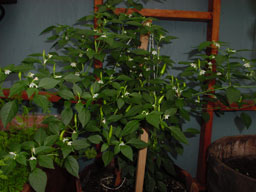
I am currently growing tomatoes, hot peppers, red sweet bell peppers, cucumbers, yellow squash, purple cabbage, bok choi, swiss chard, peas, chinese pea pods, green beans, carrots, radish, onions, lettuce, kale, raspberries, apple trees, apricot trees (northern variety) and am going to put in a couple of cherry trees yet. I also have a few herbs growing in pots that I could take into the house during the winter months. I am doing this to learn what I need to do to replace what I get at the stores, and to prepare garden beds and learn what I need to know to raise these vegetables. Each year I increase the size of my garden and my knowledge base and become a little more self-reliant.
Many of our gardens now fall into a learning or hobbyist type of garden. This is great, but you must look to see if it is enough for you to subsist year round on. If things are tough, hunting will also be difficult because everyone with a gun will be trying to kill anything they think they can eat, you will not have much to supplement your garden with. Domestic rabbits are relatively easy to raise, but must be protected from dogs and other predators (other people too). Chickens are also relatively easy to raise (also need to be protected from predators) but sometimes need supplements like calcium shell if they are raised in a pen. I really think that unless you start thinking of putting in somewhere near an acre of garden you will just have a hobbyist garden. If you want to feed your family year round you will need more space or learn to be more efficient in what you are doing. Keep track of what you get off of the space you planted and what you have planted. Keep a diary or notebook to keep track of what you are doing in your garden, things like - when did you start your seedlings, what variety were they, when did you water them and how much did you give them, what kind of fertilizer did you use and how often, when did they begin to sprout-grow-produce etc., how much did they produce and did you get to can or freeze any product. Then look at your production and see just how long you have extended your food budget. With this information you may be able to extrapolate just how much you will have to grow to provide your own food post SHTF. Think of not buying anything (just in case the stores arenít open) and think of how much space you need to cultivate to get the food you will need. Usually more than people think. Small gardens will supplement a food storage program but they will not replace food storage...How much food storage do you have?
Food storage is great and absolutely necessary. If TSHTF in the fall, like during Sept or October, if you only have a 90 day food storage supply, it would be gone by January and a long way to go with tightened belts until the first harvest from your next garden. I feel that at least a one year supply of basic food storage and a second yearsí worth of augmenting supplies would be more realistic. That way you can get into the production and home canning of your produce, and still have some supplies to fall back on. For instance what happens if TSHTF in the fall, you put in a garden the following spring and just before you start harvesting a storm blows through and destroys your garden? If you do not have something to fall back on you are outta luck. Small gardens are more easily destroyed than a large garden. Something may survive, the larger the garden the more survives.
Lastly, donít wait till the SHTF to start your gardening, you will probably be far behind what you need to provide for your family. Get started now and get past the mistakes and problems. Learn now so you will be really prepared. Be sure to identify and store a sufficient amount of seeds of the variety of plants that you have learned to grow and will provide a good crop to eat and have excess to can for the winter. Sorry, this is one of my pet peeves and one of my personal goals, to get enough land to put in approximately an acre or more of garden or as much as I can get. Living off of our garden when I was a kid really made an impact on my life.
All materials at this site not otherwise credited are Copyright © 1996 - 2003 Trip Williams. All rights reserved. May be reproduced for personal use only. Use of any material contained herein is subject to stated terms or written permission.